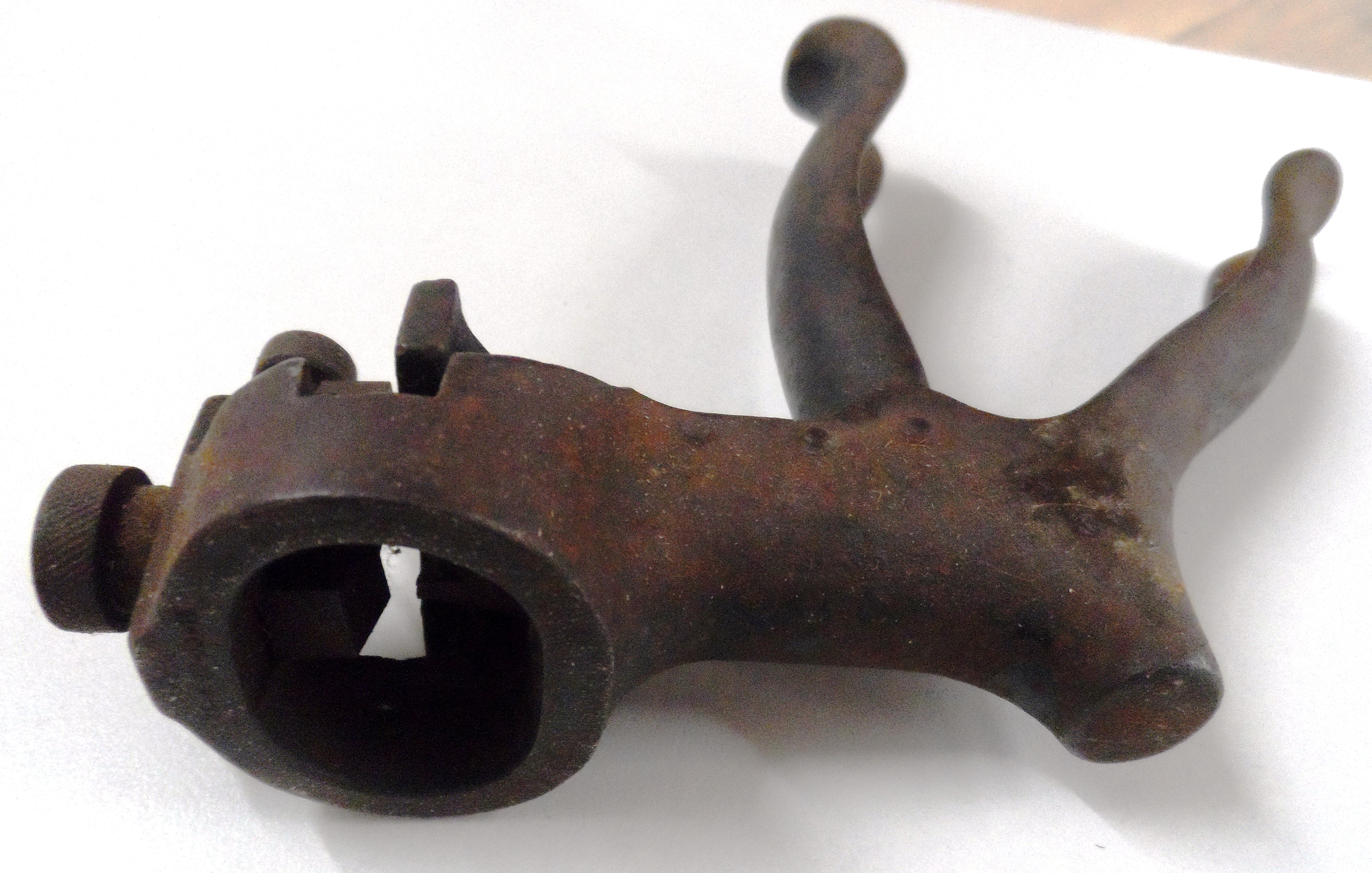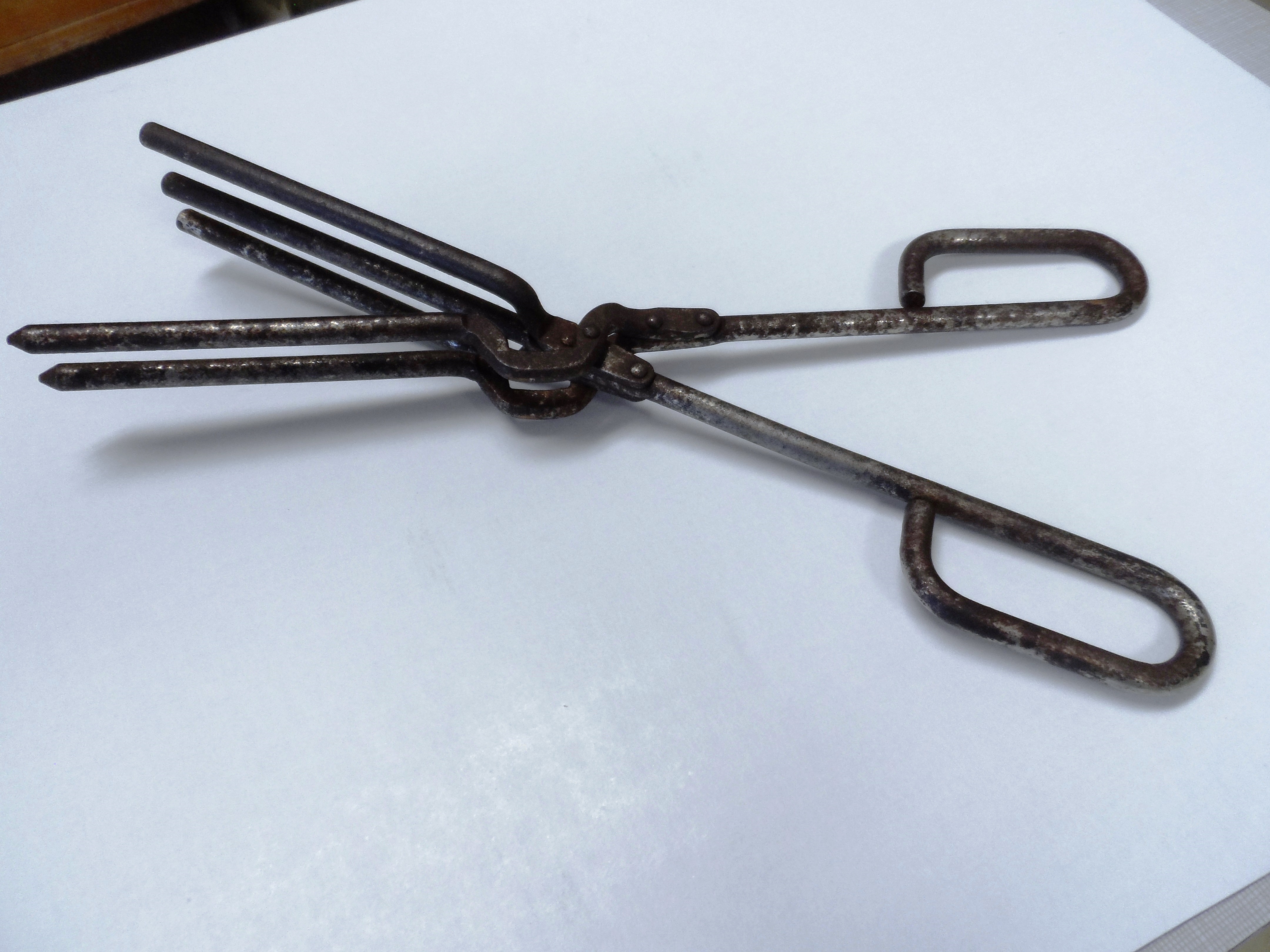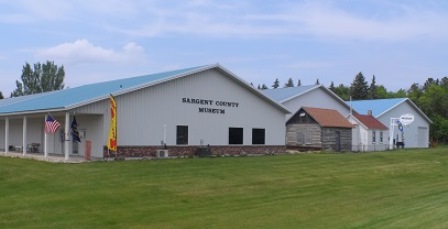Sargent County Museum
What is It?
This page is a fun page of items that you can try to figure out what they are. Then follow the numbers to the answer at the bottom of the page.
 #1
#1

Item #1 is a saw set for bending teeth to the right angles on saws. A saw set is a term applied to various forms of a tool used in the tuning and sharpening of saw blades. It adjusts the distance the saw teeth are bent away from the saw blade. Wikipedia says that when the teeth of a saw are formed from the body, they are in line and the same thickness as the blade immediately behind them. A saw with this configuration is said to be a “no” or “0” set. To prevent the body of the blade binding and for other enhancements to the cutting action, the teeth can be set (angled out) from the blade. Specialized tools like a veneer saw or flush-cut saw may be set only to one side. Whereas some saws have patterned sets that may require specially designed saw sets to create. The demand for saw sets is clear when you see that from 1810-1925 almost 900 different saw sets were patented. If you would like to see this item come to the Sargent County Museum in Forman, ND and you will find it in building 4 in the tool display.
Item #2 is a Mercel curling iron. A Marcel is a type of curling iron used to set the hairstyle of the same name. In 1872 Francois Marcel Grateau invented a hairstyle that became known as the "Marcel Wave." Deep waves, not curls, were made in the hair by using a special tong-like iron. The earliest curling irons were made in France, but later they were also made in Germany. The original irons were heavy tongs with rounded internal surfaces that had to be handled by an operator trained in knowing how to make a deep natural looking wave, and not a round curl. The tongs were heated over a rectangular shaped gas burner about six or seven inches long and two inches wide. With such primitive equipment it was hard to maintain the correct temperature for the iron—too cool and the wave did not set, too hot and the hair got burnt. The hairdresser was known to test the iron on a piece of paper before using it on a client’s hair. If the paper burnt, the iron was too hot! Irons that could be adjusted to change the sizes of the curls were introduced in 1933. Electric irons were first made in the 1920’s, but non-electric irons continued to be used until the late 1950s. You will find this item in our bathroom display.
